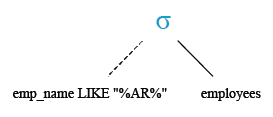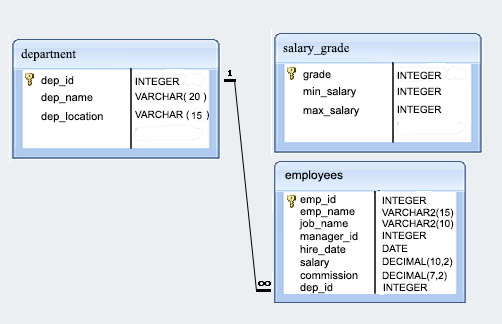SQL Exercise: List the employees whose names contain AR together
[An editor is available at the bottom of the page to write and execute the scripts.]
109. From the following table, write a SQL query to find those employees whose names contain the character set 'AR' together. Return complete information about the employees.
Sample table: employees
Sample Solution:
SELECT *
FROM employees
WHERE emp_name LIKE '%AR%';
Sample Output:
emp_id | emp_name | job_name | manager_id | hire_date | salary | commission | dep_id --------+----------+----------+------------+------------+---------+------------+-------- 67832 | CLARE | MANAGER | 68319 | 1991-06-09 | 2550.00 | | 1001 67858 | SCARLET | ANALYST | 65646 | 1997-04-19 | 3100.00 | | 2001 69324 | MARKER | CLERK | 67832 | 1992-01-23 | 1400.00 | | 1001 (3 rows)
Explanation:
The said query in SQL that selects all columns from the 'employees' table where the "emp_name" column contains the characters "AR" anywhere within the string. The "%" symbol is a wildcard that matches any sequence of characters.
Relational Algebra Expression:

Relational Algebra Tree:

Go to:
PREV : Employees joined with a as the 2nd character of a month.
NEXT : List the employees those who joined in 90's.
Practice Online
Sample Database: employee

Have another way to solve this solution? Contribute your code (and comments) through Disqus.
What is the difficulty level of this exercise?
Test your Programming skills with w3resource's quiz.
